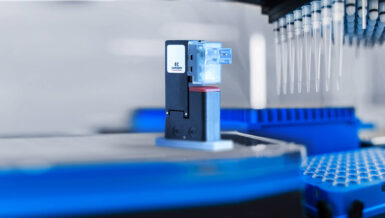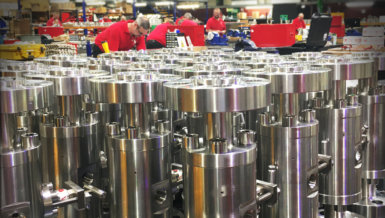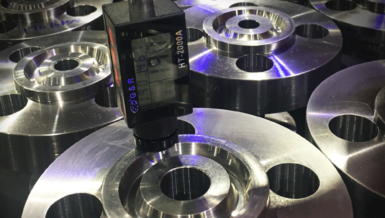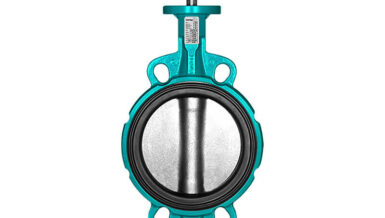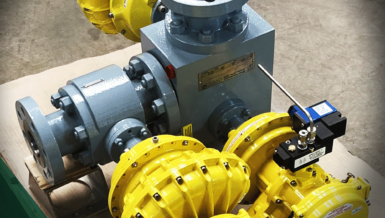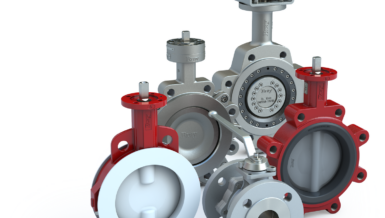Modern solutions work inductively and offer a variety of advantages over previous feedback systems with mechanical contacts, which often have a limited service life.
To ensure a smooth process flow and the correct position of valves, fittings, ball valves, etc., plant operators need feedback solutions that are reliable and long-lasting. In light of this, it is surprising that in many businesses, the old mechanical limit switch boxes are still used. On the extended shaft of the valve actuator, there are electromechanical contacts in a housing which serve to feed back the valve position. So it is just a matter of time until dirt, corrosion, and wear leave their mark and the reliability of the feedback can no longer be guaranteed.
Inductive Sensor Technology: Resistant to Aggressive Environments
Although limit switch boxes offer a certain amount of shielding, they are not designed to be completely shielded. Therefore, they cannot provide lasting protection, particularly against gases, vapors and other atmospheric conditions. Because, whether it be in the chemical, food, or drinks industry, the likes of moisture, salt, acids, alkalis, and other aggressive substances must be dealt with everywhere. The inductive sensor principle is impervious to such environmental influences. Inductive sensors are like electronic switches that are actuated by metallic target elements. The decisive factor here is the influence of the actuator on an LC resonant circuit, by changing its inductance and therefore the frequency of the resonant circuit. As soon as the actuator enters the magnetic field of the resonant circuit, the sensor electronics detect this and generate a corresponding output signal.
As the electronics do not contain any moving components, they can effectively be packaged in sealed housings. The mobile targets are mostly made of high-alloy stainless steel and are therefore impervious to dirt, dust, oil, moisture, and chemical influences. The noncontact sensing ensures that inductive systems operate with absolutely no wear and generally enable extremely reliable and durable solutions.
In the case of valve position signalling, ‘dual sensors’ offer the ideal solution. They combine two superimposed inductive sensor elements and therefore provide a separate feedback signal for both ‘open/closed’ valve position. Depending on the position, either one or the other sensor output is active, which provides maximum operational reliability. The activator element attached to the drive shaft, also known as the puck, contains two stainless steel targets that are arranged as required by the movement of the valve actuator (usually offset by 90 degrees). The principle of the inductive dual sensor, which is as simple as it is effective, considerably reduces the mounting and maintenance work compared to limit switch boxes.
Dual Sensors for Every Application
As the pioneer and inventor of the inductive proximity switch in the 1950s and 60s, Pepperl+Fuchs has more than half a century of experience in the field of inductive sensor systems, from which the extensive range of inductive solutions for valve position signalling has benefited in particular. The three series F25/F25K, F31/F31K and F31K2 cover all requirements in the field of valve position feedback and end position control, and feature their high precision and repeat accuracy.
A highlight is the 2-wire DC version with ‘almost volt-free contact,’ for which the residual current is so low that it can be used as a 1-to-1 replacement for mechanical limit switches and reed switches. These dual sensors are therefore 100% compatible with all existing control systems, which means that you can also use current I/O cards on which only feedback systems with mechanical contacts originally worked. So now there is nothing standing in the way of modernization from the control side.
Proven in Extreme and Outdoor Use
While the F31/F31K series is the right choice for numerous standard applications, the F31K2 solutions have been designed for extremely harsh applications. These devices are uncompromisingly optimized for outdoor use and, with the degrees of protection IP66, IP67, and IP69K as well as an extended temperature range of -40 °C…+75 °C, withstand all environmental influences due to rain, sun, salt, frequent temperature changes, etc. The available aluminium or plastic housing and the special ‘housing-in-housing’ design ensure dual mechanical protection, the maximum possible impermeability, and UV resistance.
Conclusion
Inductive valve position feedback systems work reliably and durably under the most adverse ambient conditions and are available in numerous variants for indoor and outdoor use. As a result of interesting new and further developments, many new application possibilities are now opening up in the modernization of the inner workings of limit switch boxes. Special low-power versions operate for the first time without limitation on conventional I/O cards for mechanical contacts. As they no longer need to be replaced, the plants can be converted to inductive, wear-free systems at particularly low cost.





